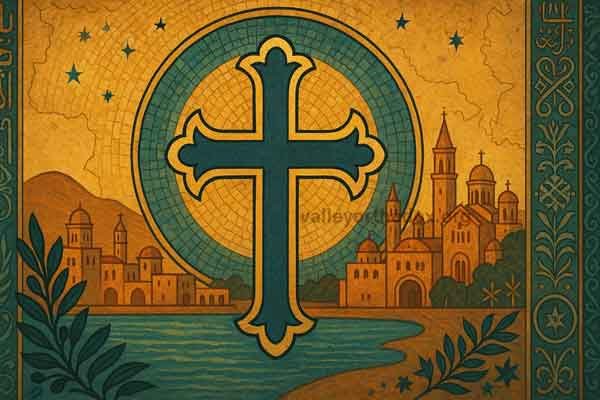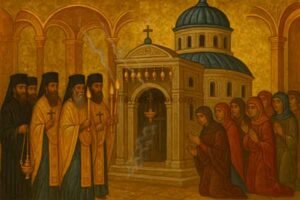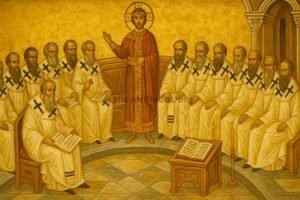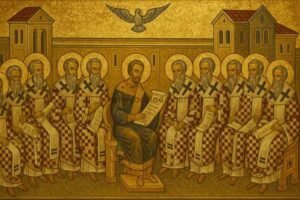From the pages of the New Testament to a global pastoral presence, the Orthodox Church of Antioch has shaped Christian life with biblical preaching, careful exegesis, and resilient witness. Known today as the Greek Orthodox Patriarchate of Antioch, the Church carries an apostolic identity that took root in the eastern Mediterranean and now serves faithful across the world.
Apostolic Beginnings in the New Testament
Peter, Paul, and the first “Christians” in Antioch
The Book of Acts presents Antioch as a missionary springboard: here Jesus’ disciples were “first called Christians” (Acts 11). The community gathered Jews and Gentiles into one Body; Peter and Paul both ministered from the city, and the local church sent Paul and Barnabas on journeys that would shape the Mediterranean world.
St. Ignatius of Antioch and early episcopal witness
By the early second century, St. Ignatius of Antioch articulated a theology of unity around the bishop, Eucharist, and charity. His letters—composed on the road to martyrdom—testify to a church already anchored in sacramental life and doctrinal clarity. Antioch’s pastoral voice was practical, biblical, and missionary.
Antiochene Teaching and the Schools of Exegesis
Literal-historical emphasis and Christological clarity
Antioch became famous for its literal-historical reading of Scripture. Without denying spiritual senses, Antiochene teachers insisted on the historical integrity of the biblical text and the real humanity of Christ. This method helped the Church articulate Christology in language that safeguarded both the full divinity and full humanity of the Savior.
Preachers and pastors: Diodore, Theodore, and John Chrysostom
Figures such as Diodore of Tarsus and Theodore of Mopsuestia shaped the exegetical school; the most beloved Antiochene preacher, St. John Chrysostom, forged pastoral homiletics that still nourish Orthodox parish life. Their legacy endures wherever careful exegesis is married to eloquent, practical preaching.
Councils, Empires, and the Making of a Patriarchate
From Nicaea to Chalcedon: Antioch’s role and responses
Antioch’s bishops participated decisively in the First Ecumenical Council (Nicaea, 325) and subsequent councils. The Church embraced the Nicene confession that the Son is consubstantial with the Father and later received the Council of Chalcedon (451), which affirmed the unity of Christ’s person “in two natures,” without confusion or division.
Shifts under Byzantine, Arab, and Ottoman rule
Across changing political horizons—Eastern Roman/Byzantine, Arab, and Ottoman—the Patriarchate navigated civic realities while guarding worship, monastic life, and education. Antioch’s faithful persevered through earthquakes, invasions, and demographic shifts, renewing parish structures whenever stability returned.
Identity and Communities
Greek Orthodox (Melkite) tradition in the Levant
Within the Chalcedonian family, the Greek Orthodox (often called Melkite) tradition took root in the Levant—Syria, Lebanon, and beyond. Greek and later Arabic became principal languages of worship; the Church cultivated a pastoral identity at home among Arabic-speaking Christians while maintaining communion with the wider Orthodox world.
Parallel traditions after Chalcedon
After 451, parallel hierarchies emerged in the region. The Greek Orthodox Patriarchate of Antioch and the Syriac Orthodox Church share apostolic roots yet developed along distinct theological and canonical lines. Contemporary dialogue emphasizes respect for shared Scripture, Fathers, sacraments, and the call to holiness.
Liturgy and Spiritual Life
Antioch’s place within the Byzantine rite
Today the Patriarchate ordinarily celebrates the Byzantine rite (Divine Liturgies of St. John Chrysostom and St. Basil). Liturgical texts and hymnography—often rendered in Greek, Arabic, and local languages—carry Antioch’s biblical voice into parish worship. Chant traditions and iconography form a catechesis in beauty, leading the faithful through the Church year.
Saints, hymnography, and local devotions
The calendar honors martyrs and confessors of the region alongside universal saints. Parishioners encounter Scripture not only in readings but in stichera and canons that interpret salvation history for daily life.
Trials, Migrations, and Diaspora
War, displacement, and resilient parishes
Modern upheavals brought suffering and migration. Yet parishes rebuilt, clergy served displaced communities, and monasteries offered prayer and charity. The Antiochian witness is marked by perseverance—a pastoral presence to those uprooted by conflict or poverty.
Antiochian presence across the world
Significant diaspora communities now thrive across the Americas, Europe, and Australia. Parishes balance fidelity to Antiochene tradition with pastoral sensitivity to local cultures, languages, and civic contexts—evidence of a living mission rather than a museum of memories.
Mission and Governance Today
Patriarch, Holy Synod, and diocesan structure
The Church is led by the Patriarch of Antioch and All the East together with the Holy Synod of bishops. Metropolises and dioceses coordinate catechesis, youth work, clergy formation, philanthropy, and evangelization across the Levant and the wider world.
Social ministry, education, and inter-Orthodox cooperation
Schools, clinics, and charitable agencies extend liturgy into service. The Patriarchate collaborates with sister Orthodox Churches on theological, pastoral, and humanitarian fronts, offering its Antiochene voice to pan-Orthodox endeavors.
Heritage: Churches, Manuscripts, and Sacred Art
Notable shrines and monastic centers
Historic churches and monasteries—some rebuilt after disasters—hold relics, icons, and liturgical treasures that embody continuity in prayer. Architecture structures sacred space around altar, ambo, and iconostasis, placing Word and Sacrament at the center.
Antiochene contributions to preaching and Scripture
From Ignatius to Chrysostom, Antioch gave the Church a homiletic craft steeped in Scripture. This heritage persists wherever pastors teach with clarity, charity, and doctrinal soundness.
Timeline & Quick Reference
- 1st century: Apostolic community in Antioch; disciples first called Christians (Acts 11).
- 2nd century: St. Ignatius writes letters on unity of bishop, Eucharist, and love.
- 4th–5th centuries: Antioch participates in great councils; Nicaea (325), Chalcedon (451).
- Late antiquity–Ottoman period: Patriarchate adapts under changing empires; parishes and monasteries endure.
- Modern era: Renewed education, philanthropy, and diaspora growth; continued mission across the Levant and beyond.
FAQs
Who founded the Church of Antioch?
The New Testament shows a diverse apostolic community in Antioch, with Peter and Paul active there. Tradition lists St. Peter among the early bishops.
What is distinctive about Antiochene theology?
A literal-historical approach to Scripture and careful language about Christ’s divinity and humanity. This balance shaped homiletics and catechesis.
Where is the Patriarchate based today?
The Greek Orthodox Patriarchate of Antioch functions across the Levant and serves global diaspora communities through metropolises and dioceses.
What languages are used in worship?
Primarily Arabic and Greek, with services also celebrated in the languages of diaspora communities.



